Dracula: Dead and Loving It isn’t well regarded in the Mel Brooks pantheon of parody. A box office as well as critical failure, the vampire lampoon would be his last directorial feature, and for some, it seems like a sour note to exit on. However, at risk of seeming meshuga, there’s a case to be made for this underappreciated spoof of the world’s most famous bloodsucker.
Leslie Nielsen is stellar as the titular Count. No other performer possesses the gravitas and comedic timing to make Dracula hilarious and unsettling. Mel Brooks offers up a classic Van Helsing that, while signature Brooks, takes rewarding cues from Edward Van Sloan in Tod Browning’s classic 1931 adaptation. Harvey Korman in the role of Dr. Seward is a marvelous foil. Hardly his first foray into comedy, besides starring in The Carol Burnett Show, he also appeared in previous Mel Brooks movies such as Blazing Saddles. Lysette Anthony and Amy Yasbeck expertly fluctuate between demure, repressed British ladies and lustful vampire vixens. Steven Weber’s Jonathan Harker is splendid in his comedic reactions to events, and Peter MacNicol as Renfield often steals scenes.
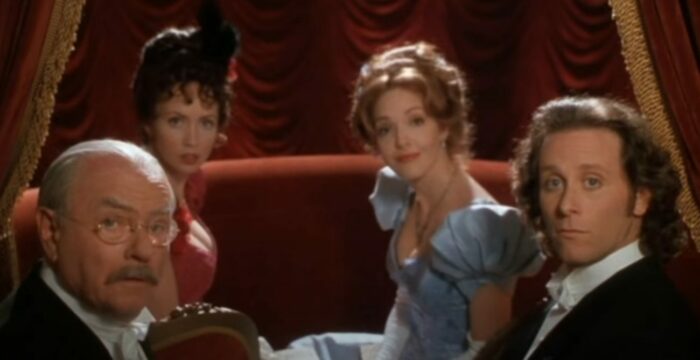
In other words, it’s easy to praise the cast. But what makes Dracula: Dead and Loving It special runs deeper. The film sinks its fangs through layers. Like many Mel Brooks features, it’s a broad examination of cinema. Consider, Blazing Saddles is a send-up of the whole cinematic western mythos at the heart of U.S. culture. In that same vein, Dracula: Dead and Loving It draws from the entire subgenre of vampire films.
The core here is the typical Dracula narrative. What Brooks does magnificently is weave together various stylizations that have emerged over the decades. This isn’t one incarnation of the notorious vampire. Dracula: Dead and Loving It satirizes elements from Hammer Films, Tod Browning’s interpretation, and a multitude of movies featuring the infamous Count. As he did with Robin Hood: Men in Tights, which teased Kevin Costner’s Robin Hood: Prince of Thieves but also The Adventures of Robin Hood from 1938 (starring Errol Flynn, Olivia Havilland, and Basil Rathbone), Brooks spoofs entire styles and representations of the subject material.
This not only allows for a broad canvas and myriad paints, it draws attention to how much a part of our cultural consciousness the material is. Like Moby Dick, Dracula is so well known that people who haven’t read the book know the plot. So, it makes sense to parodically dissect such a well-known story.

Vampires as folklore exist in some form or another all around the world. This entity, especially in the form of Dracula, has long been a metaphor for a variety of topics which can make people uncomfortable. These include but are not limited to mortality, sexuality, xenophobia, and metaphysical philosophy.
Mel Brooks once said, “The comedy writer is like the conscience of the king. He’s got to tell him the truth. And that’s my job: to make terrible things entertaining.”
With Dracula: Dead and Loving It, Brooks is, in essence, holding up a funhouse mirror to the most terrifying concept of all, the human condition. Though he did that in other movies as well, what’s interesting here is the film deflates the allure of the monster. Instead of making Dracula something people might desire to be, Brooks makes the Count ridiculous and by extension any ambition to be like him. In a weird way, this involved making the vampire the monster again, something that Hollywood steered away from in the early 1990s.
Films like Interview with a Vampire (1994) and Bram Stoker’s Dracula (1992) made blood chuggers sympathetic individuals. Audiences are almost asked to pity the poor predators. Less fiendish leeches and more tragic exsanguination enthusiasts, vampires became brooding beauties in search of companionship. A trend that would ultimately culminate in Twilight (2008). However, Dracula: Dead and Loving It briefly returned the nosferatu to the role of pure evil. Bumbling and inept but still very evil.
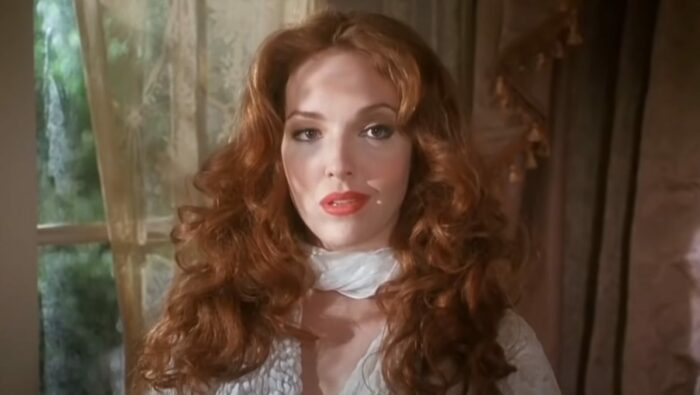
Even in its imperfections Dracula: Dead and Loving It is pure Brooks. Few auteurs can share such an obvious distinction. Any casual observer can guess simply by the comedy the film is a product of Brooks and company. The only downside is the confines of such recognition.
Parody can be restrictive, though within that crucible the best comedians can thrive. The typical failing is making things too topical. References isolated to a narrow period lose their impact as time leaves them behind. Consider how many jokes in Airplane! (1980) are lost on modern audiences unfamiliar with cultural references like Barbara Billingsley. Granted, the point may be to mock something specific, but Brooks typically excels by ridiculing a genre and style of film or a human foible, thereby making a bit more timeless. This has been a strength throughout his comedy career.
The crack in the coffin here is that while certain jokes have an impact on their own, the depth of their humor is relative to one’s awareness of the source material. Lusty busty vampire vixens make for easy sex jokes, but the parody at play is really Hammer films. Writers such as Tom Fallow have made a solid case “Hammer was at the forefront of a social shift towards youth culture and a political and sexual liberation. Their movies increasingly explored the conflict between repression and liberation so pertinent to ’60s Britain.” However, even the most astute academic analysis can’t seriously believe audiences ogling the Hammer Cavalcade of Cleavage immediately bounced from Ingrid Pitt’s bountiful bosom to thoughts of sex positive activism.
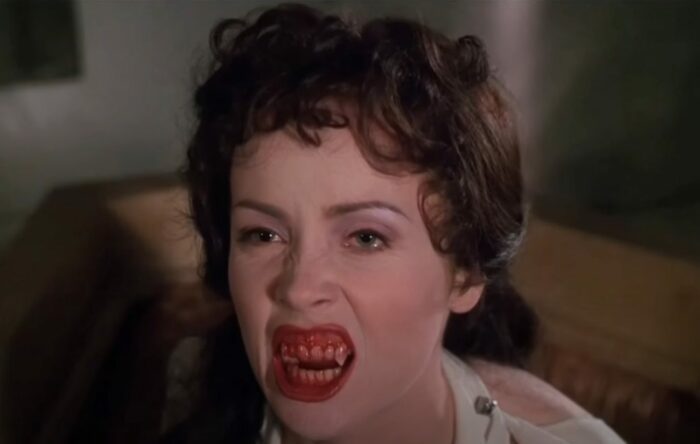
That means certain jokes in Dracula: Dead and Loving It are more multifaceted than they seem. On one hand, the movie gives a knowing smirk to the audience, conceding that titillation is the simple rationale for a low-cut dress. Yet, the other side of the coin is an exaggeration of Hammer’s metaphors about sexual liberation. Brooks brings this across by playing off the reactions to lusty vamps. The joke is then only partly about sensuality. It’s more about the way people overreact to it, sometimes outright horrified by sexuality, and one scene demonstrates this brilliantly.
It involves Lysette Anthony and Steven Weber. Having recently turned into a vampire, Lysette as Lucy attempts a seduction, and the following exchange ensues.
Lucy: Let me show you the deep, raw passion of unbridled sexual frenzy.
Harker: But Lucy! I’m British.
Lucy: (lustfully squeezing her cleavage together) So are these!
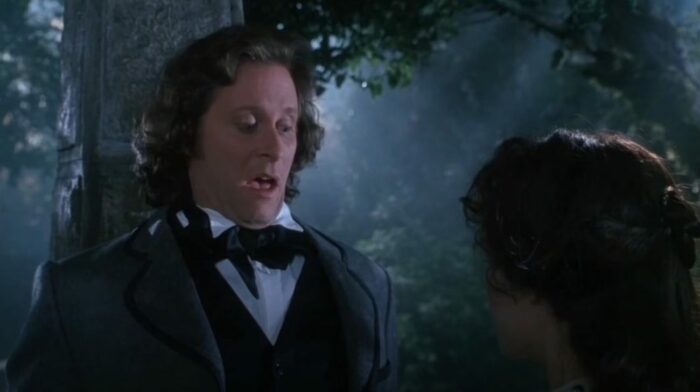
Besides what’s said, part of the punchline here is Harker’s reaction. Weber’s facial expression is comedy gold and serves as a reminder that one of Brooks most common comedic devices is the response to situations. As director, he typically sets up the scene so the audience can get characters’ reactions. Instead of bland shot, reverse shot quick cuts jumping between isolated takes, Brooks keeps the camera focused on a set of characters. This allows performers to react to one another as well as the environment. It’s most notable in Young Frankenstein where a good chunk of the comedy is Gene Wilder’s wordless reactions. However, it exists to a similar degree in Dracula: Dead and Loving It.
The Count casually walks by a room only to double back alarmed by his vampire brides humping the hell out of Renfield. Van Helsing’s exasperation when Harker thinks nosferatu means Lucy is now Italian. The entire village waiting for Madame Ouspenskaya’s ululations to stop. When idiocy and absurdity are acknowledged by those onscreen, it connects the audience with characters because there’s a shared sense of the ridiculous. This a hallmark of any Mel Brooks comedy.
The other is a loving attention to detail. There are subtle nods peppered throughout to a variety of classic monster movies. Madame Ouspenskaya, played by acclaimed actress Anne Bancroft, is a nod to performer Maria Ouspenskaya who portrayed the Romani fortune teller in The Wolfman (1941) and Frankenstein Meets the Wolfman (1943). The set of Dracula’s castle masterfully evokes a visual echo of Bela Lugosi’s crumbling vampire lair. The lighting at times even captures the visual flavor and color palette of not only Hammer films but Francis Ford Coppola’s take on Dracula.
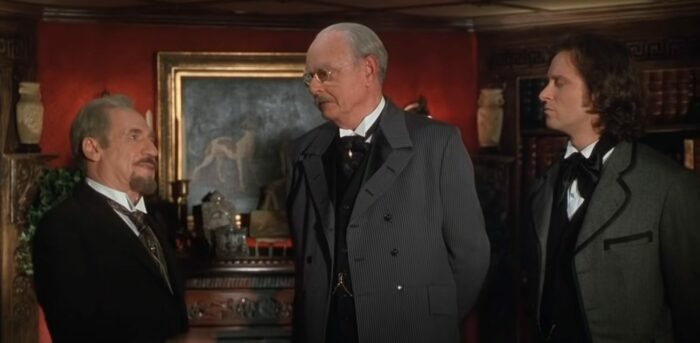
It requires an amazing skill to not only perceive but reproduce such elements. And very few reviews, if any, really seem to appreciate the cinematic aspects of the film. Frankly, overall, I think part of the problem is context. Having made masterpieces in the past, Brooks is always measured by those successes. Expectations are therefore high and even the slightest slip-up risks a long fall.
Of course, none of this negates some of the criticism. It’s more to emphasize that the film deserves some appreciation. Not because it necessarily stands on the same level as the masterpieces but because Dracula: Dead and Loving It is a still a solid example of the artist. Mel Brooks is, in more ways than one, in all of his movies. An element no less obvious, though perhaps a bit less appreciated, than in Dracula: Dead and Loving It.
Brooks possesses a storied history influencing generations, and as such, his own efforts often echo his lengthy career. What’s seen on screen connects to the iconic filmmaker’s whole history. Born Melvin Kaminsky in 1926, the aspiring comedian eventually became a writer working on the Sid Caesar shows for nearly a decade.
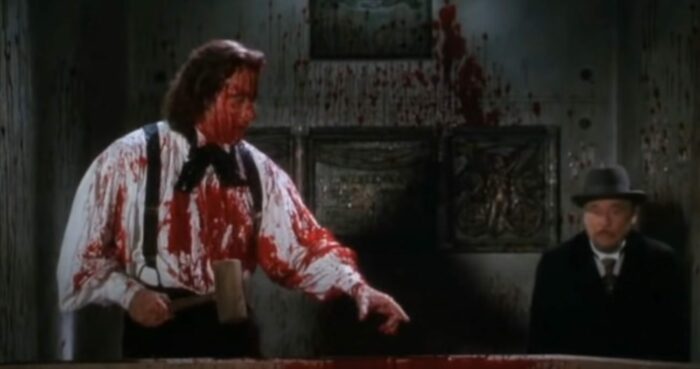
Besides the legendary Caesar, it’s not hard to suspect Brooks learned significant lessons from other performers as well. Such as Imogene Coca, who starred on Your Show of Shows. It was once said of her, she could “take people or situations suspended in their own precarious balance between dignity and absurdity, and push them over the cliff with one single, pointed gesture.” The same could be said of the Mel Brooks cinematic highlights. So much of the groundwork of what would become his style evolved from those early days, especially thanks to his anxiety.
While working on Your Show of Shows Brooks began experiencing debilitating anxiety attacks that had him vomiting like a fire hydrant in the parking lot. A colleague advised him to see a psychiatrist and that got young Brooks in touch with himself. That element of insight, the humanity in the picture, is what sets his comedy apart from others.
In a 1978 interview with Rollingstone, Brooks said, “On Your Show of Shows, we satirized Japanese movies way back in 1954. There were maybe 7000 people who had seen Japanese movies… and the TV executives objected at first. But the skits worked on two levels: for the 7000 who had seen them, and for those who understood fear, hunger, lust, anger — everything human that was in those films.”
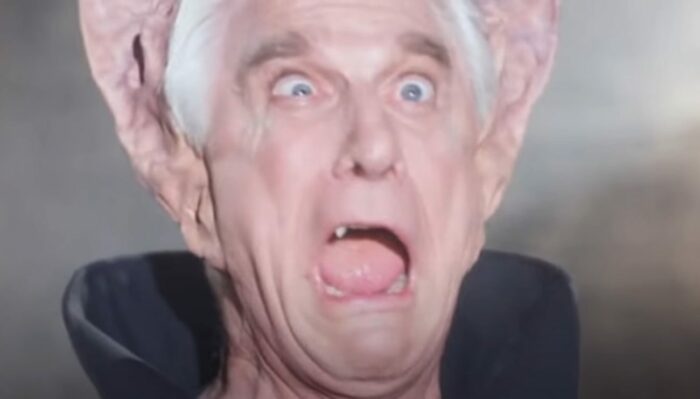
A fabulous example of this is The German General, a sketch written by Brooks and starring Sid Caesar alongside Howard Morris. It features Sid Caesar’s incredible ability to perform double-talk. Essentially, imitating foreign languages while actually just spewing gibberish. What appears to be a demanding German officer barking at a subordinate soon reveals this overbearing uniformed mass of medals is simply a doorman for a high-class hotel. The twist of expectations blends with the characters’ aspirational absurdity to hilarious proportions.
It’s worth mentioning because a similar scene plays out in Dracula: Dead and Loving It. The first encounter between the Count and Professor Van Helsing involves a double-talk duel. Each of the characters attempt to get the last word in a made-up version of Moldavian. It’s a hilarious exchange and easily one of the funniest parts of the movie. But it also contains a humanizing absurdity when one considers the immortal vampire and genius professor are squabbling over who gets the last word. The scene is also touching. Cynics may claim it sounds like an old horse returning to a drying well, another way to see it is Mel Brooks paying homage to a comedy legend and good friend.
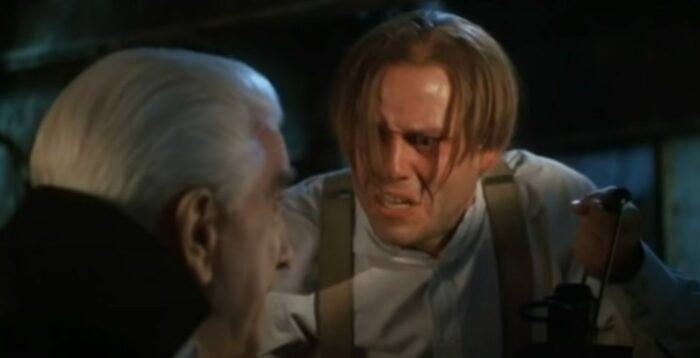
Whatever the case, Dracula: Dead and Loving It is a film that seems, on paper, like it should work. All the right pieces are there. Unfortunately, cinema is as much catching lightning in a bottle as it is careful craftsmanship. Ultimately, where it doesn’t work is more subjective than anything else. However, the way in which it tends to be dismissed entirely is a real shame. Such casual rejection ignores the film’s love of its horror origins and a lifetime learning to make terrible things entertaining.
Mel Brooks wrote in his autobiography, “Comedy has the most to say about the human condition… you can survive when things are bad if you have a sense of humor.”
The movie wouldn’t be the end of his career. Brooks eventually moved on to Broadway productions of The Producers and Young Frankenstein. So, perhaps the real take away is that even a master can fail. The trick is carrying on afterward. Something that’s a little bit easier with a sense of humor.



